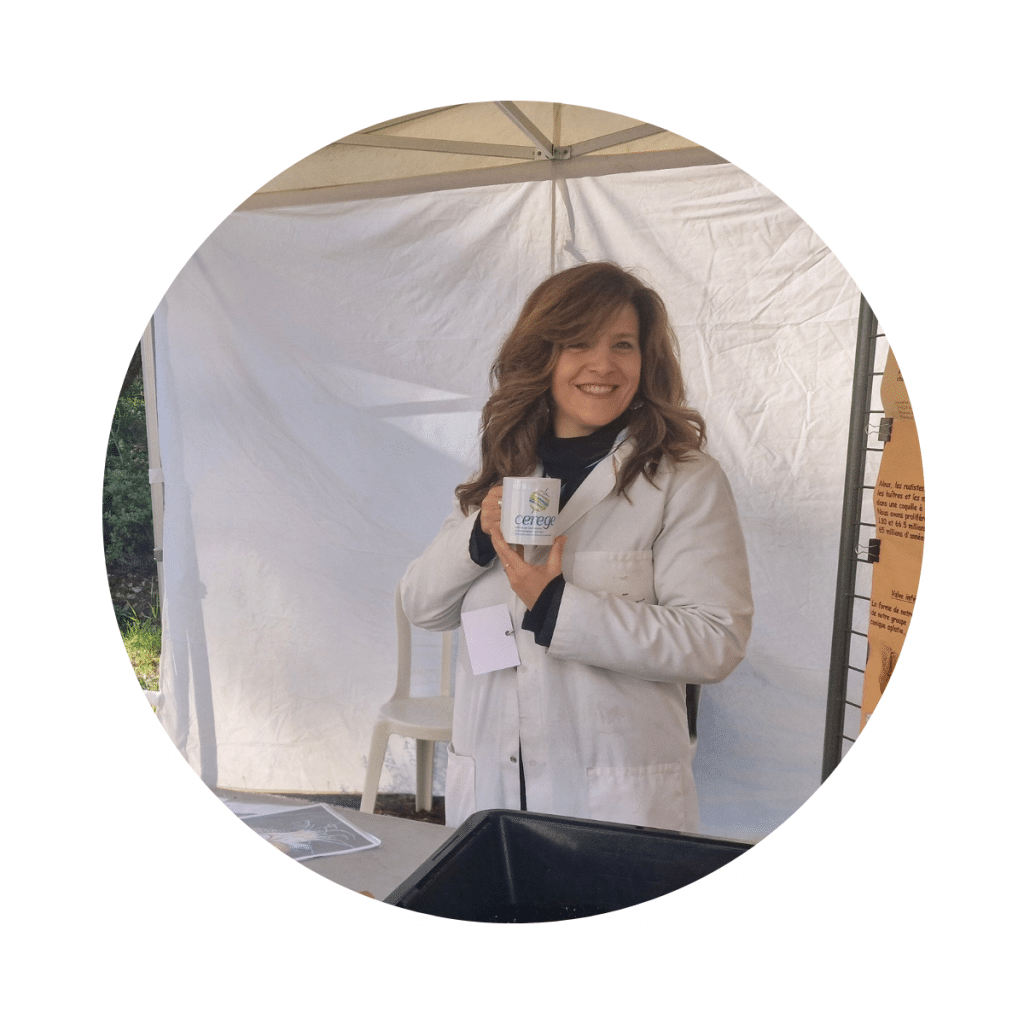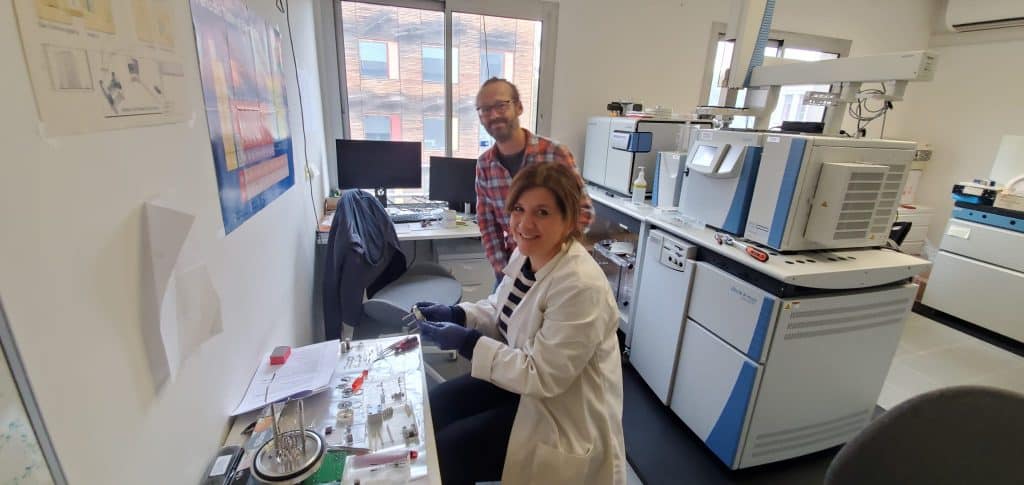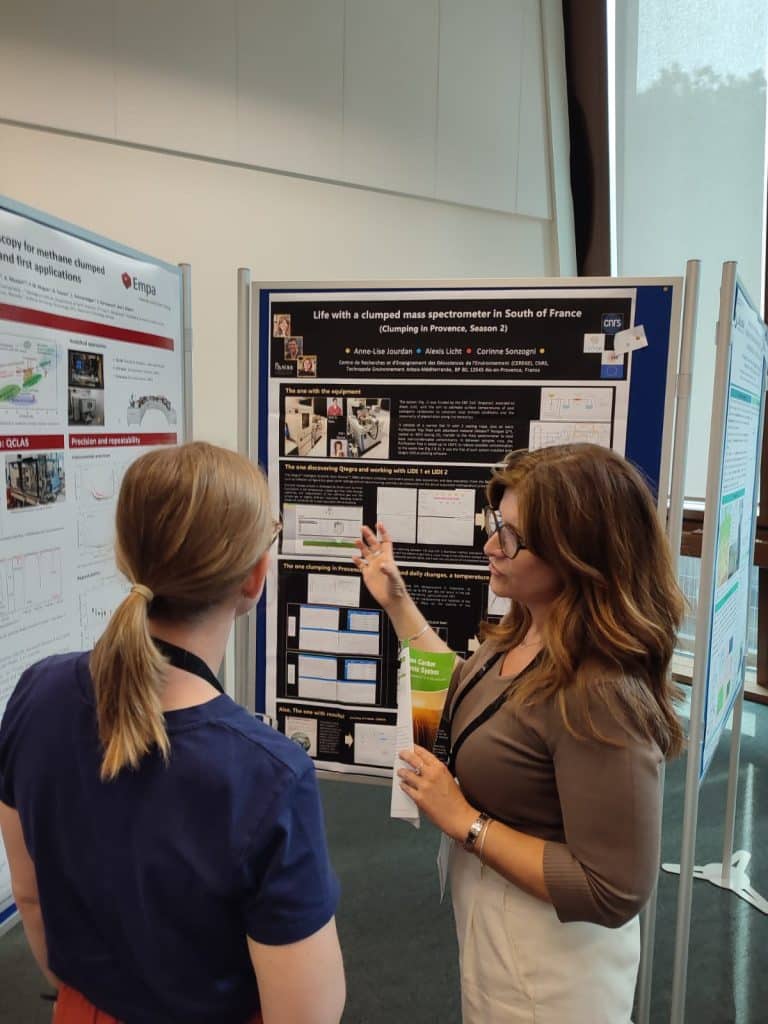FOCUS | Anne-Lise Jourdan
Geochemist specialising in stable & clumped isotopes, Research Engineer at the PANISS analytical platform

My career path is undoubtedly a little atypical, guided more by curiosity and the desire to understand and do things than by the quest for academic recognition. Today, as a research engineer at CEREGE, I work very closely with isotope geochemistry instruments, in a demanding and stimulating research environment.
A vocation born of an earthquake
It all started when I was 11. The great San Francisco earthquake had just happened, and I said to myself: "I want to be a seismologist". This fascination with the Earth's movements never left me. I started a degree in Earth and Universe Sciences at Aix-Marseille University, but once I was in, I quickly realised that seismology, with its mathematical background, wasn't for me. So I decided to branch off into laboratories, geochemistry and stable isotopes, initially as part of a Masters in Montpellier and then a second M2 in Paris, where I specialised in geodynamics.
During my Masters course in Naples, on Vesuvius, my vocation really clicked: I discovered the experimental work, the preparation of samples, the analyses... and I knew that this was where I wanted to develop. In the end, it wasn't the theory that attracted me to research work but the practical side. I've always loved handling instruments, tinkering with things and adjusting protocols. In fact, I often say that I'm more comfortable putting other people's ideas into practice than carrying out scientific projects myself.
Finally, after my Master's studies, I left to do my thesis at the University of Lausanne on elemental and isotopic zonations in natural alpine quartz. Over there, I easily spent ten to twelve hours a day in the lab, and it was a great learning experience. This experience gave me a real technical versatility and rigour that I still use today as a research engineer at CEREGE.
Ten years in London
Once I'd finished my thesis, I went on to do a postdoc in Neuchâtel and then a research fellowship in the UK. I first ended up in the north of England, which was a difficult environment, particularly in terms of the climate, being a southerner.
I ended up getting a job in London for 3 years at Imperial College and then at University College London, within the BEIF (Bloomsbury Environmental Isotope Facility)where I stayed for ten years. I was put in charge of running the laboratory. I did everything: analyses, student training, repairs, orders, cleaning... It almost became my baby. But the Covid pandemic was the trigger that pushed me to take a step back from my situation, and I realised that I wanted to return to France.

Defense of thesis in 2008
Bloomsbury Environmental Isotopes Facility (University College London) | New spectrometer arrives at BEIF during COVID epidemic

Example of clumped isotopes (after Huntington and Lechler, 2025, in Techtonophysics)

Cleaning the spectro source at PANISS
The turning point for clumped isotopes
It was also at this time that I began to take a renewed interest in clumped isotopes. I still remember it: in 2006, during my thesis, I heard about the first international conference on the subject, in Melbourne. I thought it was crazy that such fundamental discoveries could still be made in geochemistry!
The clumped isotopes, or grouped isotopes, make it possible to reconstruct past temperatures by analysing, for example, the proportion of molecules containing two heavy atoms, in CO₂ derived from carbonates (mass 47). The colder it is, the more of these molecules there are - a sort of natural thermometer, but a very subtle one.
This technique is very powerful, but also extremely restrictive: samples are rare, analyses take a long time and the protocols are complex. You need a flawless analytical chain. And that's precisely what I know how to put in place.
Back to France, a new start in Aix
In September 2022, I took part in a workshop on clumped isotopes. A colleague in Paris told me about a job opening at CEREGE. I applied and met Alexis Licht, who was in charge of my research. an ERC project on animal migration. The interview went well. I was offered the job. Coincidentally, the machine dedicated to clumped isotopes, a brand new Thermo MAT253+, arrived at CEREGE a few days before I did, in May 2023.
Since my arrival two years ago, I have been working at the PANISS platformI was in charge of getting the spectrometer up and running. My role is to make the measurements reliable, to develop routines and to optimise each stage. Each sample has to be analysed around fifteen times to obtain statistically sound results. It's a job requiring patience and precision.
I also devote part of my time to training. I accompany young researchers, teach them how to use the instruments and share my feedback. I take part in specialist workshops, not to sign first-author articles, but to show how protocols are developed, tested and implemented.
What I prefer is technical dialogue, discussion of methods and practical adjustments. For me, communication is essential. It requires energy and attention, but it's what makes the quality of the collective work.
Concrete applications, between fundamental research and transition
Grouped isotopes are also of interest to industry. During a postdoc, I worked with Shell and Qatar Petroleum on CO₂ storage projects (carbon capture and storage). The idea was to characterise the geological reservoirs where carbon could be reinjected. A way of reusing oil infrastructures for uses compatible with the transition.
Today, I'm more focused on fundamental research, but the approach remains the same: produce reliable data, build robust tools, better understand the interactions between climate, biosphere and geosphere.
What's next? There's no shortage of projects. I'm currently working on the installation of a gas extraction line. offlineto analyse the even rarer but potentially richer 48 mass. I'm also following new technologies with interest, such as laser-coupled spectrometers. Nothing is ever set in stone in isotope analysis. You always have to juggle rigour and exploration, tried and tested methods and innovation.

Poster presentation at the JESIUM (Joint European Stable Isotopes Users Meeting) 2025 conference

